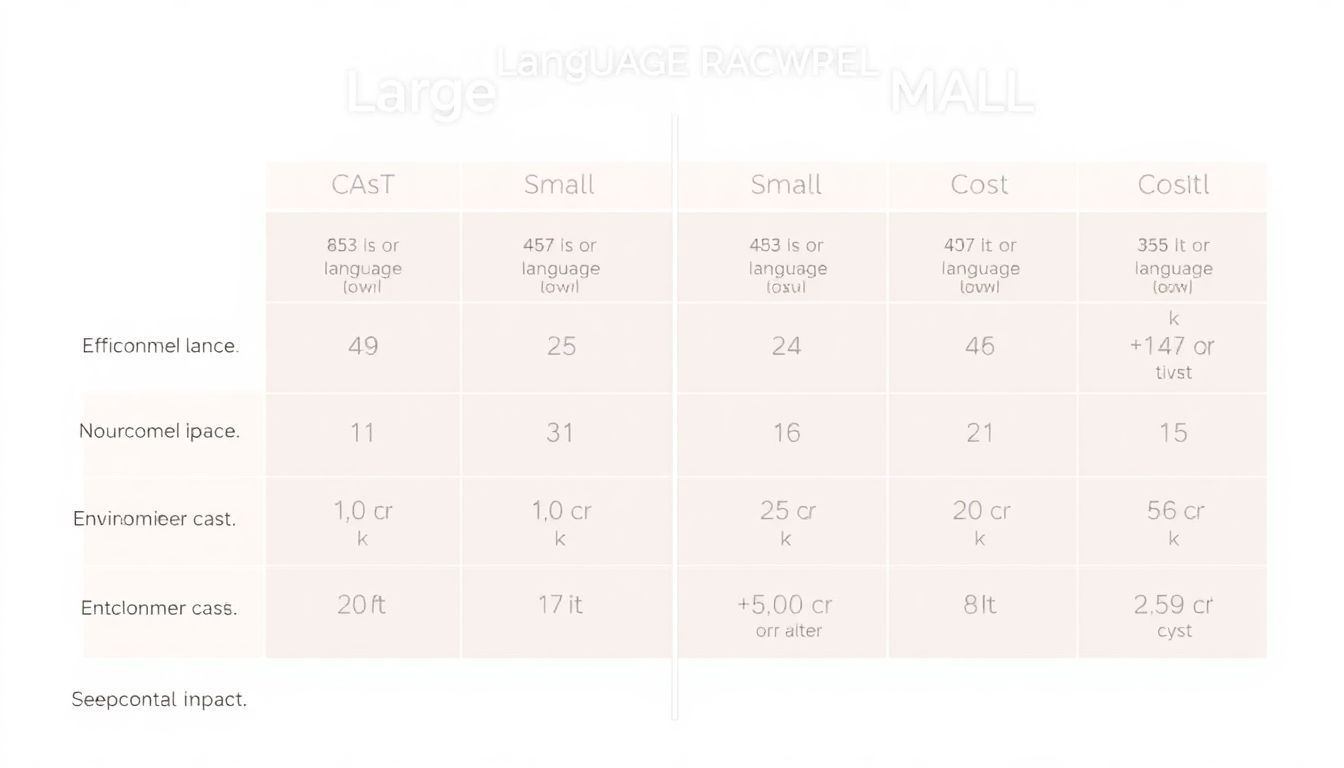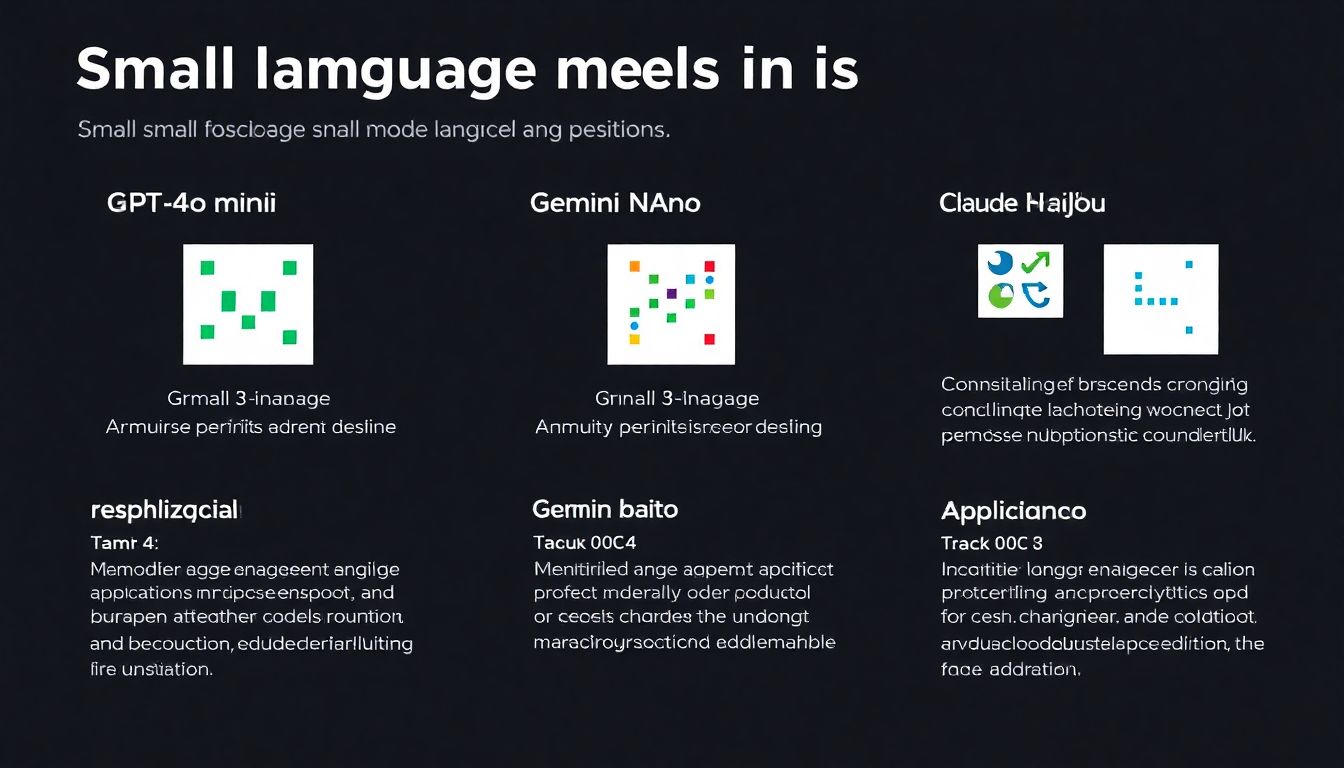Welcome to a fascinating journey into the future of AI! In this article, we’ll explore the rising stars of the AI world: small language models. These efficient, pocket-sized powerhouses are set to revolutionize how we interact with AI, making it more accessible, affordable, and eco-friendly. So, buckle up as we dive into the world of small language models and discover why they are the next big thing!
Large language models unleashed the power of AI. Now it’s time for more efficient AIs to take over.
Imagine stepping into a bustling cityscape straight out of a science fiction novel, where the air is filled with the hum of AI-powered devices operating in seamless harmony. Every street corner, every building, and every vehicle brims with intelligent systems that communicate and collaborate through intricately woven networks. The integration of AI is so pervasive that it has become an invisible, yet omnipresent, force shaping the urban landscape and the lives of its inhabitants.
At the heart of this futuristic tableau are small language models, deftly embedded into the fabric of everyday life. These models, though compact, are powerful enough to understand and respond to human language with remarkable precision. They are the unsung heroes behind the smooth operation of smart homes, where lights adjust to your mood, and refrigerators order groceries before you even realize you’re running low. They are the brains behind virtual assistants that manage your schedule, answer queries, and even provide companionship, all with a natural, conversational ease.
The true magic of these small language models lies in their ubiquity and accessibility. They are not confined to high-end gadgets or elite circles but are democratized, available in devices as mundane as coffee makers and as critical as healthcare monitors. This seamless integration allows for a world where technology does not just aid but anticipates and adapts, creating an environment that is not only efficient but also deeply personal and intuitive. The cityscape pulsates with a symphony of AI interactions, each one a testament to the transformative power of small language models in redefining urban living.

The Era of Large Language Models
Large language models (LLMs) like GPT-3, developed by OpenAI, have significantly transformed the AI landscape. These models, built on vast amounts of text data from the internet, have shown remarkable prowess in generating human-like text, translating languages, and even writing code. Their impact is multifaceted:
- They have democratized access to advanced AI capabilities, enabling developers to integrate sophisticated language understanding into applications without needing deep AI expertise.
- They have sparked innovation in AI ethics, bias mitigation, and factual grounding, as researchers grapple with the models’ limitations and potential misuses.
- They have influenced industries ranging from customer service to content creation, where automated drafting and chatbot interactions are becoming increasingly common.
The significance of LLMs in the AI world is profound. They represent a shift from task-specific models to more general, adaptable intelligence. GPT-3’s ability to perform a wide range of tasks without task-specific training has implications for how we develop and interact with AI. It challenges traditional notions of AI training and highlights the importance of scale in AI performance. Moreover, LLMs have spurred competitors to develop similar models, fostering a dynamic ecosystem of improvement and innovation.
The role of scale in LLM performance is paramount. Research has shown that larger models, trained on more data and with more computational resources, tend to perform better. This is due to several factors:
- Emergent abilities: Larger models exhibit abilities not seen in smaller models, such as the capacity to translate between multiple languages or write simple programs.
- Improved robustness: Larger models tend to be more robust to distribution shifts and adversarial inputs, enhancing their reliability in real-world applications.
- Better sample efficiency: Despite requiring more data for training, larger models can generalize better from fewer examples during inference.
However, scale also brings challenges, including increased energy consumption, higher inference costs, and potential for misuse. Balancing these trade-offs is a critical aspect of responsible LLM development and deployment.

The Rise of Small Language Models
In recent years, the field of natural language processing has witnessed a notable shift towards smaller, more efficient language models. This trend is a departure from the prevailing notion that bigger models, with their vast number of parameters, are inherently better. Several factors have driven this transition. Primarily, smaller models require fewer computational resources, making them more accessible and cost-effective. This is particularly beneficial for researchers and organizations with limited resources. Additionally, smaller models are more environmentally friendly, aligning with the growing concern about the carbon footprint of large-scale models.
Smaller language models offer several advantages over their larger counterparts, especially when applied to specific tasks. One of the key benefits is their faster inference time. This speed advantage is crucial in real-time applications such as chatbots, virtual assistants, and live translation services. Moreover, smaller models are often more specialized, designed to excel at particular tasks rather than being generalists. This specialization can lead to improved performance and accuracy in domains where the nuances of language are critical.
The advantages of smaller models extend to their robustness and adaptability. Given their size, these models can be fine-tuned more easily and quickly, allowing for better adaptation to new or evolving tasks. This is particularly useful in dynamic environments where language use and context can change rapidly. Furthermore, smaller models are often more interpretable, providing insights into their decision-making processes. This interpretability is valuable for debugging, refining, and ensuring that the model’s outputs are fair and unbiased. Key advantages can be summarized as:
- Lower computational costs
- Faster inference times
- Better specialization for specific tasks
- Improved robustness and adaptability
- Enhanced interpretability

Small Models in Action
Small language models have emerged as powerful tools with a wide array of real-world applications, demonstrating their versatility and potential to revolutionize various industries. These models, which are compact and efficient, are being leveraged by tech giants and startups alike to enhance user experiences, streamline operations, and drive innovation. For instance, OpenAI, renowned for its cutting-edge AI research, has utilized small language models to develop tools that assist in code generation, language translation, and content creation. These applications are not just theoretical; they are being integrated into products that millions of people use daily, such as GitHub Copilot, which employs AI to help developers write code more efficiently.
Similarly, Google has been at the forefront of integrating small language models into its suite of services. Google’s search engine, for example, benefits from these models to improve search results, understand user intent better, and provide more relevant information. Additionally, Google Assistant leverages these models to enhance voice recognition and natural language understanding, making interactions more seamless and intuitive. Beyond consumer-facing applications, Google is also exploring the use of these models in enterprise solutions, such as improving document processing and data analysis in Google Workspace.
Anthropic, another key player in the AI landscape, focuses on developing safe and reliable AI systems. Their work with small language models includes applications in customer service, where AI-driven chatbots can handle a wide range of customer inquiries with high accuracy and empathy. Moreover, Anthropic’s models are being used in content moderation to automatically flag and address inappropriate or harmful content online. The applications extend to:
- Educational tools that provide personalized learning experiences
- Healthcare solutions that assist in diagnosing and treating patients more effectively
- Financial services that use AI to detect fraud and manage risk
These examples illustrate the broad impact of small language models across diverse sectors, highlighting their potential to transform how we live, work, and interact with technology.
FAQ
What are the main advantages of small language models?
- Faster training and execution times
- Lower computational requirements
- Reduced energy consumption
- Better suitability for specific, repetitive tasks
.
How do small language models benefit the environment?
Can small language models perform as well as large ones?
Which companies are leading the way in small language model development?
- OpenAI
- Google DeepMind
- Anthropic
- Microsoft
- Writer
.
What are some real-world applications of small language models?
- Customer service chatbots
- Content generation for specific industries
- Personal assistants on mobile devices
- Specialized search engines
.
